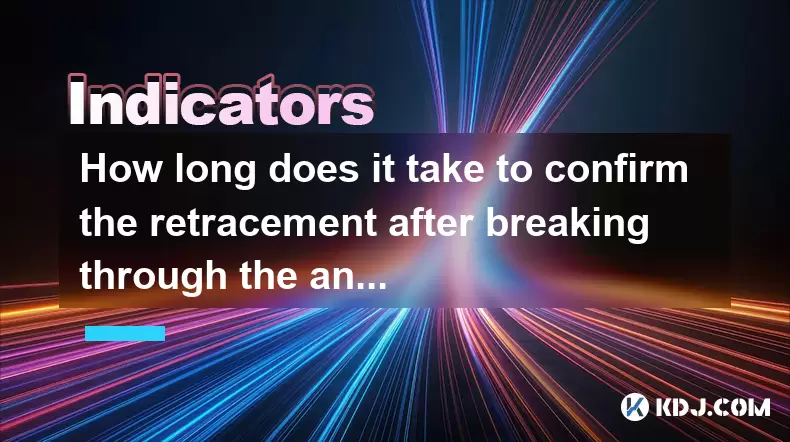-
 Bitcoin
Bitcoin $108,092.5658
-0.99% -
 Ethereum
Ethereum $2,546.4530
-1.12% -
 Tether USDt
Tether USDt $1.0000
0.01% -
 XRP
XRP $2.2676
0.12% -
 BNB
BNB $659.1616
-0.30% -
 Solana
Solana $148.8297
-1.97% -
 USDC
USDC $1.0000
0.02% -
 TRON
TRON $0.2874
-0.30% -
 Dogecoin
Dogecoin $0.1676
-3.64% -
 Cardano
Cardano $0.5765
-1.73% -
 Hyperliquid
Hyperliquid $37.2069
-6.18% -
 Bitcoin Cash
Bitcoin Cash $497.9918
-0.10% -
 Sui
Sui $2.8427
-2.26% -
 Chainlink
Chainlink $13.2689
-2.06% -
 UNUS SED LEO
UNUS SED LEO $9.0541
0.15% -
 Stellar
Stellar $0.2487
-0.92% -
 Avalanche
Avalanche $17.7710
-3.09% -
 Shiba Inu
Shiba Inu $0.0...01167
-1.28% -
 Toncoin
Toncoin $2.7488
-2.80% -
 Hedera
Hedera $0.1559
-2.28% -
 Litecoin
Litecoin $85.8945
-2.48% -
 Monero
Monero $316.0985
-2.09% -
 Dai
Dai $1.0001
0.02% -
 Polkadot
Polkadot $3.3481
-1.83% -
 Ethena USDe
Ethena USDe $1.0000
0.00% -
 Bitget Token
Bitget Token $4.2910
-3.04% -
 Uniswap
Uniswap $7.4131
-0.09% -
 Aave
Aave $280.9266
-2.67% -
 Pepe
Pepe $0.0...09816
-3.18% -
 Pi
Pi $0.4557
-2.29%
How long does it take to confirm the retracement after breaking through the annual line with large volume?
Jun 30, 2025 at 02:28 am

Understanding the Annual Line in Cryptocurrency Trading
The annual line is a significant moving average used by traders to assess long-term trends in cryptocurrency markets. Typically represented by the 200-day Simple Moving Average (SMA), this indicator helps identify whether an asset is in a bull or bear phase. When the price of a cryptocurrency breaks above or below the annual line with large volume, it signals a potential trend reversal. However, the real question that arises is: how long does it take for the retracement to occur after such a breakout?
In technical analysis, a retracement refers to a temporary reversal in the direction of the price before continuing in the original direction. In the context of a breakout from the annual line with high volume, traders often expect a pullback to test the newly broken level before resuming the trend.
Key Factors Influencing Retracement Timing
Several factors influence how quickly a retracement may occur after breaking through the annual line:
- Market sentiment and momentum: Strong bullish or bearish momentum can delay or accelerate retracements.
- Volume confirmation: A breakout supported by large trading volume typically indicates stronger conviction among market participants, which may reduce the likelihood of an immediate retracement.
- Timeframe analyzed: On higher timeframes like daily or weekly charts, retracements tend to take longer compared to intraday charts.
- Support/resistance levels nearby: If there are strong support or resistance levels close to the breakout point, they can either attract or repel price action, influencing retracement timing.
Understanding these elements helps traders anticipate when a retracement might happen and how to position themselves accordingly.
Analyzing Historical Patterns in Cryptocurrency Markets
Looking at historical data from major cryptocurrencies like Bitcoin (BTC) and Ethereum (ETH) reveals patterns in retracement behavior after breaking through the 200-day SMA with high volume. For instance:
- After BTC broke above its annual line in late 2020, it experienced a retracement approximately 15–20 days later, testing the 200-day SMA as new support.
- ETH’s breakout in early 2021 saw a retracement around 10–14 days post-breakout, also finding support near the 200-day SMA.
These examples suggest that retracements typically occur within one to three weeks after a high-volume breakout, though this isn’t a fixed rule. Each market cycle and asset behaves differently based on macroeconomic conditions, exchange inflows/outflows, and investor psychology.
Identifying Signs of an Imminent Retracement
Traders can look for several signs that indicate a retracement may be forming:
- Candlestick patterns signaling exhaustion, such as doji, shooting stars, or bearish engulfing patterns.
- Overbought/oversold indicators like RSI (Relative Strength Index) or MACD showing divergence from price movement.
- Price rejection at key resistance levels, especially if followed by a drop in volume.
Monitoring these signals can help traders determine whether a retracement is about to begin or already underway. It's crucial to combine multiple forms of analysis rather than relying on a single indicator.
How to Trade the Retracement After a Breakout
Trading the retracement requires careful planning and execution. Here's a step-by-step guide:
- Wait for a clear breakout: Ensure the price has convincingly crossed above or below the annual line with significant volume.
- Look for pullback entry points: Watch for price to return to the area of the breakout while maintaining overall trend structure.
- Use confluence zones for entries: Combine Fibonacci retracement levels, trendlines, and moving averages to pinpoint optimal entry areas.
- Set stop-loss orders: Place stops just beyond the swing low/high of the retracement candle to protect capital.
- Target realistic take-profit levels: Aim for previous highs or use risk-reward ratios (e.g., 1:2 or 1:3) to manage exits.
Properly managing trade entries and exits during a retracement can significantly improve profitability and reduce exposure to false breakouts.
Common Misconceptions About Retracements and Volume Breakouts
Many novice traders fall into traps when interpreting retracements after volume-based breakouts:
- Believing every breakout will result in a retracement — some powerful moves don’t retrace at all.
- Assuming high volume guarantees a valid breakout — sometimes volume spikes due to panic selling or short-term hype.
- Ignoring the broader market environment — even a strong individual asset can be pulled back by sector-wide corrections.
Recognizing these pitfalls helps traders avoid emotional decision-making and stay grounded in objective analysis.
Frequently Asked Questions
What does a retracement after a breakout signify?
A retracement after a breakout typically signifies profit-taking or testing of the new support/resistance level. It doesn’t necessarily invalidate the trend but offers an opportunity for new entries.
Can a retracement last longer than a month?
Yes, depending on market conditions and the strength of the breakout, retracements can last more than a month, especially if the trend lacks sustained momentum or faces external pressures.
Is volume during the retracement important?
Yes, volume during the retracement is critical. Lower volume suggests weak participation and increases the chances of the retracement ending sooner rather than later.
How do I differentiate between a retracement and a reversal?
Retracements usually respect key trendlines or moving averages and don't break major support/resistance levels. Reversals often involve strong breakouts of key levels, shifts in volume, and changes in momentum indicators.
Clause de non-responsabilité:info@kdj.com
Les informations fournies ne constituent pas des conseils commerciaux. kdj.com n’assume aucune responsabilité pour les investissements effectués sur la base des informations fournies dans cet article. Les crypto-monnaies sont très volatiles et il est fortement recommandé d’investir avec prudence après une recherche approfondie!
Si vous pensez que le contenu utilisé sur ce site Web porte atteinte à vos droits d’auteur, veuillez nous contacter immédiatement (info@kdj.com) et nous le supprimerons dans les plus brefs délais.
-
 ICNT Échangez maintenant
ICNT Échangez maintenant$0.3182
30.31%
-
 M Échangez maintenant
M Échangez maintenant$0.2011
23.43%
-
 SOLO Échangez maintenant
SOLO Échangez maintenant$0.3788
17.55%
-
 HSK Échangez maintenant
HSK Échangez maintenant$0.7010
17.49%
-
 SHX Échangez maintenant
SHX Échangez maintenant$0.0116
15.42%
-
 COREUM Échangez maintenant
COREUM Échangez maintenant$0.1392
8.59%
- Bitcoin Solaris Market Launch: A New Dawn or Just Another Altcoin?
- 2025-07-08 20:30:12
- Bitcoin, Memecoin Mania, and the All-Time High Hunt: What's Next?
- 2025-07-08 20:30:12
- Byrq Coin: Scam or Savior? A Deep Dive Review
- 2025-07-08 20:50:12
- Shiba Inu's Burn Rate Bonanza: Can Crypto Burns Ignite a Price Rally?
- 2025-07-08 20:50:12
- Telekom, injectif et validateurs: une plongée profonde dans la sécurité et la croissance du réseau
- 2025-07-08 21:10:12
- ROM: Golden Age - un demi-million de pré-registrations et un butin crypto!
- 2025-07-08 21:15:12
Connaissances connexes

How to trade Dogecoin based on funding rates and open interest
Jul 07,2025 at 02:49am
<h3>Understanding Funding Rates in Dogecoin Trading</h3><p>Funding rates are periodic payments made to either long or short traders ...

What is the 'God Mode' indicator for Dogecoin
Jul 07,2025 at 04:42pm
<h3>Understanding the 'God Mode' Indicator</h3><p>The 'God Mode' indicator is a term that has emerged within cryptocurrency trading ...

Using Gann Fans on the Dogecoin price chart
Jul 07,2025 at 09:43pm
<h3>Understanding Gann Fans and Their Relevance in Cryptocurrency Trading</h3><p>Gann Fans are a technical analysis tool developed b...

How to spot manipulation on the Dogecoin chart
Jul 06,2025 at 12:35pm
<h3>Understanding the Basics of Chart Manipulation</h3><p>Chart manipulation in the cryptocurrency space, particularly with Dogecoin...

Dogecoin market structure break explained
Jul 07,2025 at 02:51am
<h3>Understanding the Dogecoin Market Structure</h3><p>Dogecoin, initially created as a meme-based cryptocurrency, has evolved into ...

How to backtest a Dogecoin moving average strategy
Jul 08,2025 at 04:50am
<h3>What is a Moving Average Strategy in Cryptocurrency Trading?</h3><p>A moving average strategy is one of the most commonly used t...

How to trade Dogecoin based on funding rates and open interest
Jul 07,2025 at 02:49am
<h3>Understanding Funding Rates in Dogecoin Trading</h3><p>Funding rates are periodic payments made to either long or short traders ...

What is the 'God Mode' indicator for Dogecoin
Jul 07,2025 at 04:42pm
<h3>Understanding the 'God Mode' Indicator</h3><p>The 'God Mode' indicator is a term that has emerged within cryptocurrency trading ...

Using Gann Fans on the Dogecoin price chart
Jul 07,2025 at 09:43pm
<h3>Understanding Gann Fans and Their Relevance in Cryptocurrency Trading</h3><p>Gann Fans are a technical analysis tool developed b...

How to spot manipulation on the Dogecoin chart
Jul 06,2025 at 12:35pm
<h3>Understanding the Basics of Chart Manipulation</h3><p>Chart manipulation in the cryptocurrency space, particularly with Dogecoin...

Dogecoin market structure break explained
Jul 07,2025 at 02:51am
<h3>Understanding the Dogecoin Market Structure</h3><p>Dogecoin, initially created as a meme-based cryptocurrency, has evolved into ...

How to backtest a Dogecoin moving average strategy
Jul 08,2025 at 04:50am
<h3>What is a Moving Average Strategy in Cryptocurrency Trading?</h3><p>A moving average strategy is one of the most commonly used t...
Voir tous les articles

























































































